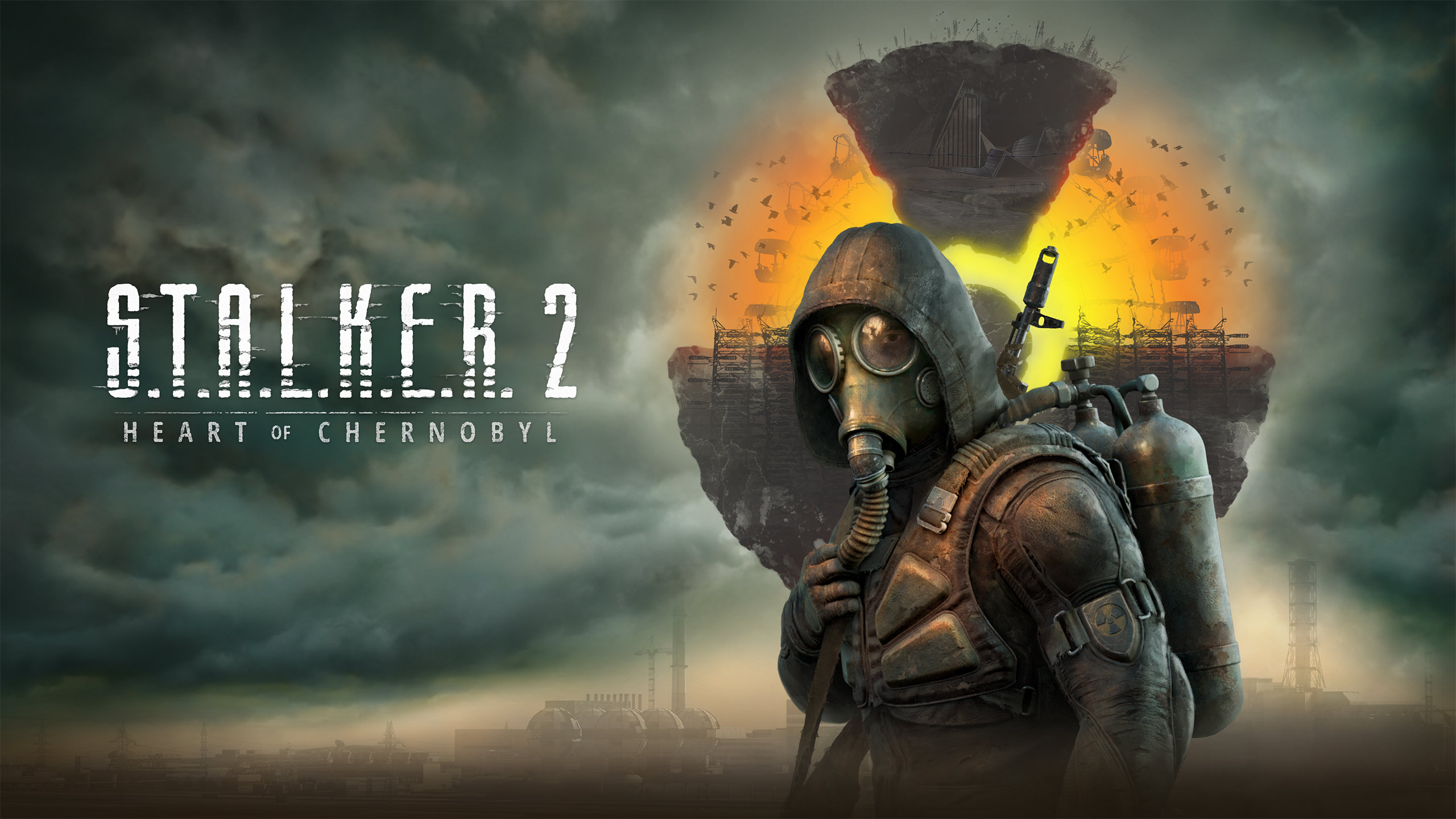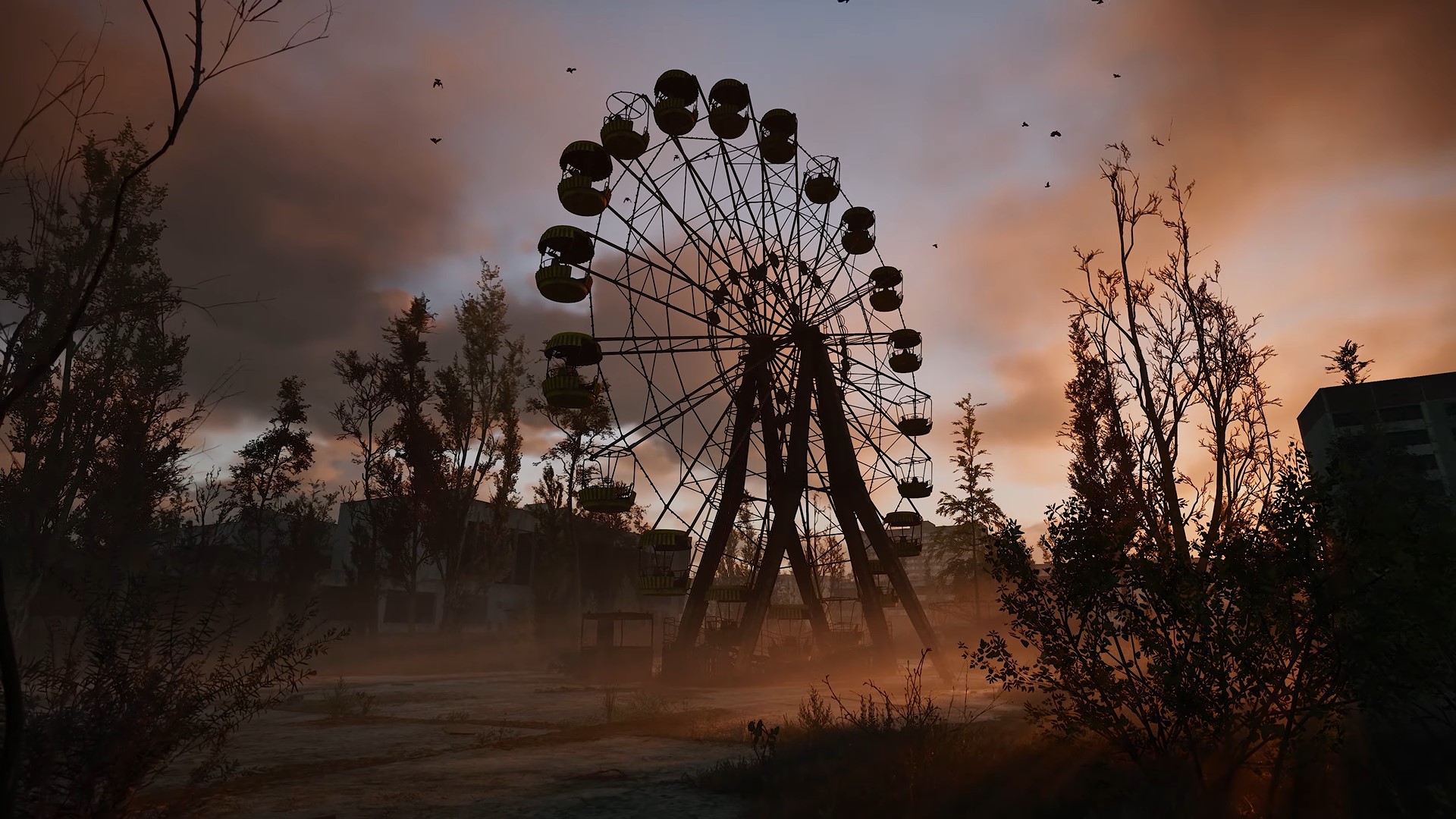Has there ever been a game with as tumultuous a development as Stalker 2: Heart of Chornobyl? Originally announced in an undeniably ancient 2010, studio GSC Game World has since died and been resurrected, the project undergoing cancellation before being exhumed and officially re-announced in 2018. In those six years since, GSC have faced the challenges of a global pandemic and a war in their native Ukraine, plus studio fires, cyberattacks, and leaks. To say the road to Heart of Chornobyl’s completion and eventual release to PC and Xbox Series X|S this November 20th has been bumpy is a massive understatement. However, we only mention the tribulations GSC have overcome not because their influence has undermined the finished product but because Stalker 2 – from the testimony of early play testers, at least – might end up in conversation for game of the year. Any success it reaps will be in spite of GSC’s ordeals. Without delving any further into Stalker 2’s gameplay, narrative, world design, lore, anything, the studio must be recognised for their monumental effort and dedication.
That said, we’re here to analyse a game incoming. One which tantalisingly blends the philosophical sci-fi of Soviet-era novella Roadside Picnic, plus Andrei Tarkovsky’s visually oblique movie interpretation, with the real-life mythos of Chornobyl’s notorious nuclear meltdown. In Stalker lore, Chornobyl’s real-world disaster was followed by a fictional one and it’s rendered the Nuclear Exclusion Zone – henceforth shortened to The Zone – a destitute landscape dotted with all manner of phantasmagorical physics; dangerous, shapeshifting anomalies capable of tearing flesh from bone. Military organisations forlornly attempt to control The Zone, yet bandits swarm and mercenary loot hunters dubbed Stalkers traipse through irradiated hazard in search of lucrative artefacts. Stalker 2: Heart of Chornobyl begins with young Stalker Skif who rides into The Zone with scientist Hermann with a plan to hunt down a particularly unusual artefact. Things go awry; Skif swiftly encounters toxic bunkers piled with corpses, hostile bandits, mutated monstrosities, and a gauntlet of anomalies to circumnavigate. Early on, he’s accosted by a more-seasoned Stalker who steals his equipment and leaves him for dead.
Whilst this early chapter is a more linear affair, once Skif awakens battered and bruised the scope of The Zone broadens to a vast open world and you’re free to begin exploring at your whim. The narrative is set up: to retrieve your stolen goods and locate Hermann’s valuable artefact whatever the cost, but GSC Game World have crafted a landscape so undeniably hostile that achieving your objectives is going to take time and patience. Additionally, Stalker 2’s version of The Zone promotes emergent gameplay; numerous ways to skin a cat as the saying goes. Choice-led narrative and mission design isn’t anything new, of course, but Heart of Chornobyl pledges transition between numerous choices seamlessly to provide an immersive, living-breathing simulation the likes of which we’ve only seen thus far in games like Elden Ring or Baldur’s Gate 3.
Stalker 2 doesn’t appear to be as nuanced as its just-mentioned contemporaries but given the feedback from journalists who’ve been treated to the first three hours of Heart of Chornobyl’s gameplay its clear all the game’s various systems interact in compelling, believable ways (if believable can be used to describe a game as phantasmagorical as this). Examples include gunfire drawing the attention of mutant packs of dogs only for them to be spooked by the sudden appearance of a floating, gravity-sucking anomaly. Objectives given by NPCs can be followed, or the stash they’ve sent you on the hunt for could be kept for yourself at the risk of worsening your moral standing amongst The Zone’s various townsfolk. One task involves rescuing an injured person, carrying them out of danger into relative safety. You may opt to do this for a reward or put them out of their misery to pilfer their pockets just like the unsavoury Stalker did to you at the game’s outset. Information from fellow Stalkers or bandits can be fought for or bought. Money is hard-earned, but the game’s gunplay is wrought with challenge. Getting into the groove of Stalker 2’s combat sometimes involves putting effort into de-escalating violence rather than opting for a guns blazing approach. Similarly, that objective given NPC might be serving you up to a nefarious brigand, the loot on offer not worth the skin-of-teeth gun battle to acquire it.
There are grumbles that Stalker 2: Heart of Chornobyl’s gunplay is janky. On the one hand, a game having been in the works for a decade and a half might elicit out-of-date gameplay, but really those that’re referring to Stalker 2’s combat as janky might be missing the point completely. See, The Zone is a derelict land. Resources are scarce; everything rots in toxic air. Guns are no safer from The Zone’s radiation than anything else, and no matter how well their owner maintains it a gun in The Zone is going to misfire. Its aim is going to be wayward. These facets of gunplay need to be observed and adopted. Sure, there could be some frustration lurking beneath a gun with bullets blocking the barrel, but it’s all a part of the miasma of forging a living in The Zone’s harsh environment. Plus, firefights are going to be tense, near-death encounters, hence why you might work to avoid them.
Enemy AI is said to be quite advanced too. Because of the nasty, brutal experience of firefights, a Destiny style run and gun is not going to work. You’ll need to be methodical; strategic even, constantly moving in search for cover. But enemies will track your movements. They’ll learn quickly if you’ve found new places to hide. Some clever bandits are even capable of silently scything you from behind, slaying you before you knew they were there.
The whole experience then is one of barely scraping through. The only question mark is in the quality of encounters against the game’s various mutants. In short: reports are they’re bullet sponges, which is a shame given the precision demanded in human encounters. This might not be indicative of the whole game mind, as only the first three hours of a build which isn’t going to be the final version have been played. Regardless, using knowledge of The Zone might be handy if mutants can indeed absorb a lot of gunfire. Those floating gravity sucking anomalies have been used to lure monstrous land-crawlers, the incongruence shooting them upwards before blasting their bodies into raining guts and viscera.
There are examples all over of choice affecting strategy affecting gameplay, but the overriding sense is that Stalker 2 is going to be a challenge. It is, first and foremost, a survival game. The game’s normal difficulty is said to still put up a hefty challenge. Hard mode, then, must be positively sadistic like trundling through The Last of Us on grounded difficulty. However, GSC have incorporated a welcome story mode which lessens the challenge for those not after the truest hardcore experience.
All in all, thanks to its excellent blending of an evocative sci-fi world with branching narratives and emergent gameplay, Stalker 2: Heart of Chornobyl is shaping up to be not just one of the most engaging, exciting, and enthralling FPS games of the year but one of the year’s best full stop. A challenging, less-curated open world experience is just what the world needs, and boy is Stalker 2 set to deliver.
Note: The views expressed in this article are those of the author and do not necessarily represent the views of, and should not be attributed to, GamingBolt as an organization.


